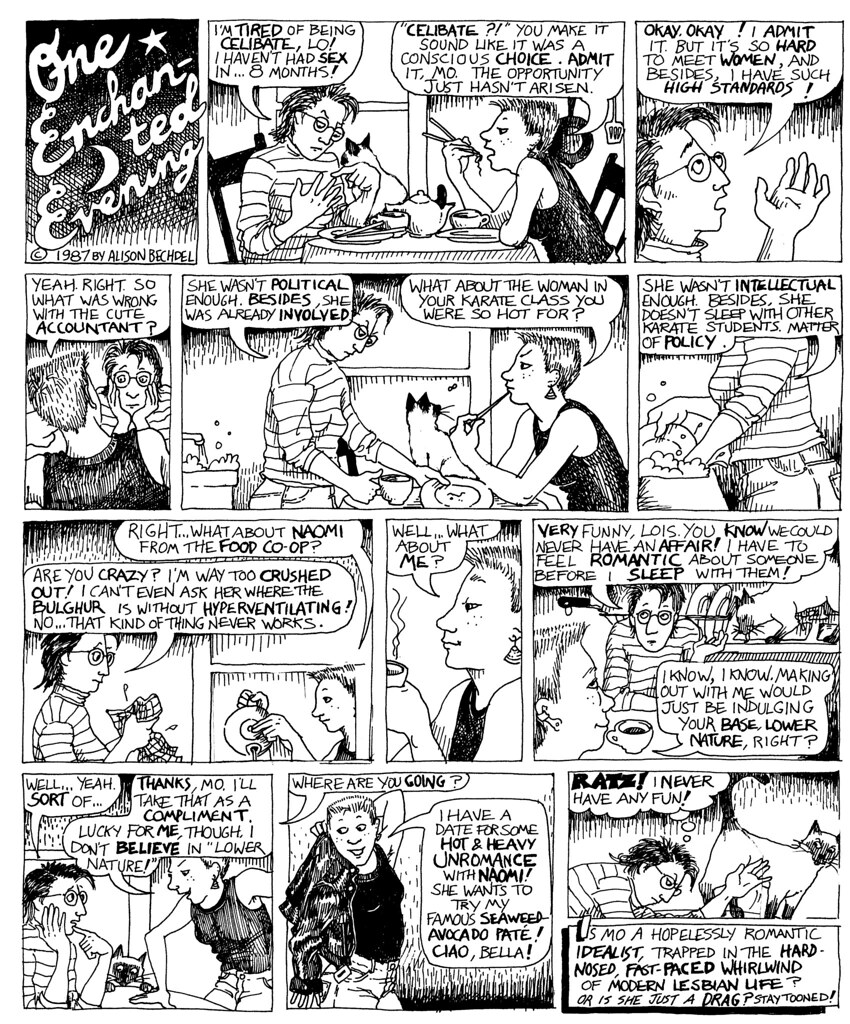As a fan (but only occasional reader) of graphic novels myself, you’d be hard pressed to find a time when I’d renounce the medium as lacking in literary merit. Allison Bechdel’s Fun Home is no exception. I would never say that the contents of that book are any less valuable than any traditionally written coming of age story. The beauty of a graphic novel is that at its best it can be a beautiful fusion of visual art and literary genius; though Fun Home is presented in a style reminiscent of Sunday Funnies, it is this adherence to her own style that is endearing to Bechdel’s narrative.
This begs the question, What of other Funnies-style comics? I still don’t know if I’m convinced we can just throw a blanket over the concept and proclaim the word literature is meaningless and that everything qualifies or nothing qualifies. I can’t say that a single strip of Garfield or Charlie Brown or something from the New York Times will consistently pull its own literary weight, though collections of them are a different story. Over time, the characters develop, we see the criticisms and observations of society more clearly, and it seems like a more solid work as a whole. From where I’m standing, one strip of Family Circus falls short of the mark, but my 300-page collection of Dilbert comics is a little more literary.
And here is where I think Bechdel’s true literary merit lies. Her story is real, and the messages all true. The narrative is wrought with allusions to mythology and more classically accepted works of literature, metaphors that make your skin crawl. Make no mistake, Bechdel is a master of her craft and is no stranger to graphically telling a story after having produced the comic Dykes to Watch Out For since 1987. Something I noticed which is very interesting to note is a glaring difference between the panels of Dykes to Watch Out For and Fun Home is the usage of dialogue. In her online comic, dialogue is the dominant mode of narration and is how the story is presented and moved forward. Large speech bubbles fill up the panels and leave little to the imagination. But in her memoir, the story is told to us by a character outside the frame, Bechdel in our present looking back on her past, and so the images are mostly unobscured. What little dialogue is available in Fun Home is there to offer us a peek into the minds of the characters at play while the story is told by the outside narrator. This choice makes Fun Home seem much calmer than the almost overwhelmingly busy Dykes to Watch Out For and puts my reading of the book in a more poignant light. Witnessing that fairly small difference in Bechdel’s narrative style emphasized just how different Fun Home is from most comic strips despite sharing a visual style. There is so much going on beneath the surface, and that is what grants it the literary merit it deserves.

Speaking of literary doodles, have you heard of Yoshihiro Tatsumi? He was a famous Manga artist–he died about a month ago, unfortunately–who was known for Gekiga. Gekiga was a literary movement in Japan during the 1960s-1980s. Its purpose was to make Manga more dramatic and for adults. Yoshihiro Tatsumi wrote a very interesting memoir in the form of a Manga called, “A Drifting Life.” It chronicles his career from 1945-1960. What’s interesting about this Manga is that Yoshihiro Tatsumi also provides the reader with the history of Japan at that time.
Anyway, I’m all for literary Doodles.
Free Pluto,
d b pena